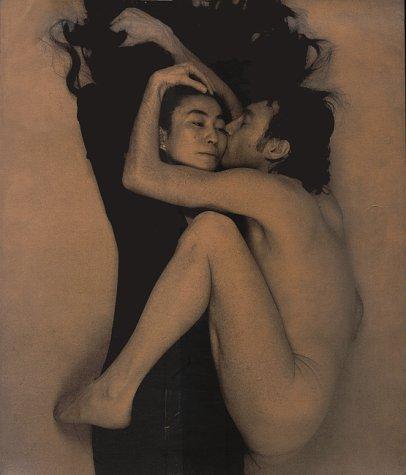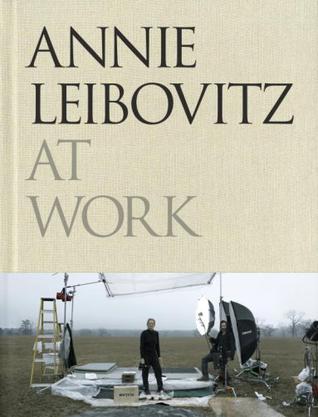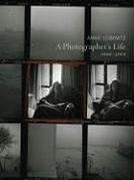-

Women
The photographs by Annie Leibovitz in Women, taken especially for the book, encompass a broad spectrum of subjects: a rap artist, an astronaut, two Supreme Court justices, farmers, coal miners, movie stars, showgirls, rodeo riders, socialites, reporters, dancers, a maid, a general, a surgeon, the First Lady of the United States, the secretary of state, a senator, rock stars, prostitutes, teachers, singers, athletes, poets, writers, painters, musicians, theater directors, political activists, performance artists, and businesswomen. "Each of these pictures must stand on its own," Susan Sontag writes in the essay that accompanies the portraits. "But the ensemble says, So this what women are now -- as different, as varied, as heroic, as forlorn, as conventional, as unconventional as this." -

Annie Leibovitz
-

American Music
The impulse to do AMERICAN MUSIC, writes famed photographer Annie Leibovitz, “came from a desire to return to my original subject and look at it with a mature eye. Bring my experience to it…make it a real American tapestry.” Her ambitious idea became AMERICAN MUSIC, a stunning collection of photographs of the musicians, places and people that enrich the landscape of American music. As Rolling Stone’s chief photographer for over thirteen years, Leibovitz created a legendary body of work. Her portraits of some of the world’s most talented musicians capture more than the performer, they convey the art of making music. For AMERICAN MUSIC, Leibovitz traveled across the country to juke joints in the Mississippi Delta, honkytonks in Texas, and jazz clubs in New Orleans “to take pictures in places that mean something.” In her signature style, she shares stunning portraits of American greats -- B.B. King, Willie Nelson, Bonnie Raitt, Bruce Springsteen, Beck, Bob Dylan, Mary J. Blige, Jon Bon Jovi, Steve Earle, Ryan Adams, Miles Davis, Etta James, Pete Seeger, Emmylou Harris, Tom Waits, The Dixie Chicks, Dr. Dre, The Roots and many more. AMERICAN MUSIC includes a commentary about the American Music project by Leibovitz, short essays by musicians Patti Smith, Rosanne Cash, Steve Earle, Mos Def, Ryan Adams, and Beck as well as biographical sketches of all the musicians. -

Photographs
Seeing so many celebrity photographs from the beginning of Ms. Leibovitz's career unveils many of the most effective methods that she uses to create her deep insights into the subject of the portrait. Although you may feel the subtlety of her work viscerally, these comparisons make it easier to appreciate the purposefulness of how the effects are brilliantly captured. If you are like me, this book will enhance your already deep appreciation of her work. Before going into all the reasons I like this book, let me mention that the book contains tasteful nudity and sexual situations that would probably cause an R rating for a motion picture (or possibly something a bit stronger, like an R plus). Many parents would be uncomfortable with some of their children seeing these images. So judge the appropriateness of this wonderful book for your own family. First, Ms. Leibovitz is looking for the soul of the person. Who are they at the core? This is captured by establishing a composition that overtly expresses this inner kernel of truth. For Roseanne Barr and Tom Arnold, this is captured by mud wrestling. For Muhammad Ali, you see a fully confident, capable man fully comfortable with himself and the world. Second, she captures the subject's personality with posing and expression within the composition. Whoopi Goldberg's playfulness is captured by a composition that has little bits of her beautiful blackness emerging from a milk bath, with a characteristicly wry, happy smile. Third, she shows the social mask that the subject uses. Lily Tomlin's face poses behind a television set image. Diane Keaton is shown wandering around with her face averted from the camera to capture her preference for privacy and appearance of shyness. Keith Haring appears wearing nothing but his painted on designs. Fourth, she connects her subject to another person where that helps to establish part of the person's reality. John Lennon appears in foetal position with Yoko Ono, in that famous image from this book's cover. The Rolling Stones are literally flying through the air at the same time while performing. The Grateful Dead are asleep on each other's shoulders. Interestingly, she is usually able to do this with a humorous, light touch that dispells some of the celebrity power of the person. Fifth, she lets a little slip in composure or a little blemish show where that adds to the underlying reality. Louis Armstrong looks scared in one classic portrait pose, while totally relaxed and in control in a less formal setting. Mick Jagger's partially healed scar is shown in another image. Jodie Foster puts on an intelligent expression that shows the Yale graduate rather than the young female star. Sixth, she captures motion in ways that give the kinesthetics of the person and situation wonderfully. For example, a group of prisoners and family members hug at Soledad Prison in California at Christmas in 1971. You see many different relationships in this one image. It's like a microcosm of all humanity. Here are my favorite images: John Lennon, New York City, 1970 Louis Armstrong, Queens, New York, 1971 Christmas, 1971, Soledad Prison, California The Grateful Dead, San Rafael, California, 1971 Ray Charles, San Francisco, 1972 Lily Tomlin, Los Angeles, 1973 Richard Pryor, Los Angeles, 1974 Andy Warhol, New York City, 1976 Tennessee Williams, Key West, Florida, 1974 Ron Kovic, Santa Monica, California, 1973 The Rolling Stones, Philadelphia, 1975 Brian Wilson, Malibu, California, 1976 Muhammad Ali, Chicago, 1978 Robert Penn Warren, Fairfield, Connecticut, 1980 John Lennon and Yoko Ono, New York City, December 8, 1981 Greg Louganis, Los Angeles, 1984 Bruce Springsteen, Asbury Park, New Jersey, 1987 Whoopi Goldberg, Berkeley, California, 1984 Twyla Tharp, New York City, 1989 Michael Jackson, Los Angeles, 1989 Mikhail Baryshnikov, New York City, 1989 After you have enjoyed the book, I suggest that you make a drawing that does a similar unveiling of someone you know well. You might even consider a self-portrait. Ms. Leibovitz says those are the hardest to do. Look deeply into those all around you and see the truth . . . as well as the fictions. -

Annie Leibovitz at Work
“The first thing I did with my very first camera was climb Mt. Fuji. Climbing Mt. Fuji is a lesson in determination and moderation. It would be fair to ask if I took the moderation part to heart. But it certainly was a lesson in respecting your camera. If I was going to live with this thing, I was going to have to think about what that meant. There were not going to be any pictures without it." —Annie Leibovitz Annie Leibovitz describes how her pictures were made, starting with Richard Nixon's resignation, a story she covered with Hunter S. Thompson, and ending with Barack Obama's campaign. In between are a Rolling Stones Tour, John Lennon and Yoko Ono, Demi Moore, Whoopi Goldberg, The Blues Brothers, Arnold Schwarzenegger, Keith Haring, Mikhail Baryshnikov, Patti Smith, George W. Bush, William S. Burroughs, Kate Moss and Queen Elizabeth. The most celebrated photographer of our time discusses portraiture, reportage, fashion photography, lighting, and digital cameras. -

A Photographer's Life
”I don’t have two lives,” Annie Leibovitz writes in the Introduction to this collection of her work from 1990-2005. ”This is one life, and the personal pictures and the assignment work are all part of it.” Portraits of well-known figures-Johnny Cash, Nicole Kidman, Mikhail Baryshnikov, Keith Richards, Michael Jordan, Joan Didion, R2-D2, Patti Smith, Nelson Mandela, Jack Nicholson, William Burroughs, George W. Bush with members of his Cabinet-appear alongside pictures of Leibovitz’s family and friends, reportage from the siege of Sarajevo in the early Nineties, and landscapes made even more indelible through Leibovitz’s discerning eye. The images form a narrative rich in contrasts and continuities: The photographer has a long relationship that ends with illness and death. She chronicles the celebrations and heartbreaks of her large and robust family. She has children of her own. All the while she is working, and the public work resonates with the themes of her life.